The pharmaceutical industry is focused on the discovery, development, production, and distribution of medications to treat or prevent diseases. It includes a wide range of operations such as chemical synthesis, fermentation, formulation, packaging, and distribution.
This industry involves handling volatile chemicals, solvents, and gases throughout the manufacturing process. Many of these substances are flammable, toxic, or corrosive, and if not properly monitored, can cause fires, explosions, health hazards, or regulatory violations.
Pharmaceutical Industry encompasses several processes. Here are some of the key processes in the Pharmaceutical Industry.
- Chemical Synthesis (API Production)
- Fermentation & Bioprocessing
- Solvent Handling & Recovery
- Drying & Granulation
- Tablet Coating & Final Dosage Manufacturing
- Cleanroom Operations & HVAC Systems
- Sterilization & Decontamination
- Inerting & Gas Blanketing
- Cryogenic Storage (Cold Chain for Biologics)
- Effluent Treatment & Waste Gas Scrubbing
Chemical Synthesis (API Production)
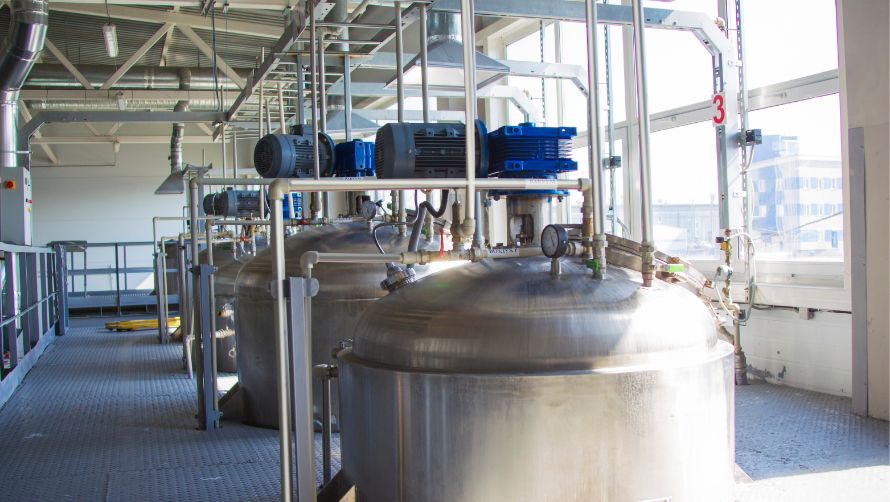
Chemical synthesis is the foundational step in pharmaceutical manufacturing, involving the creation of Active Pharmaceutical Ingredients (APIs) through controlled chemical reactions. This process may involve multiple steps such as alkylation, oxidation, halogenation, esterification, or polymerization using organic and inorganic reactants. The operations are typically carried out in reactors, pressure vessels, and jacketed vessels, and often use solvents and catalysts. These steps are critical, but they also introduce significant gas hazards, including the release of volatile organic compounds (VOCs), corrosive gases, and flammable vapors.
Types of Gases Present
Ammonia (NH3) – Often used as a reactant or by-product; corrosive and toxic.
Hydrogen Chloride (HCl) – Generated during halogenation reactions; highly corrosive and toxic.
Hydrogen (H2) – May be used in hydrogenation reactions; highly flammable and explosive.
Carbon Monoxide (CO) – May be produced in side reactions; toxic and difficult to detect without specialized sensors.
Nitrogen Dioxide (NO2)/Oxides of Nitrogen (NOX) – Can be released during nitration; highly toxic.
Reactor Vents and Relief Valves
Relief valves and vents on chemical reactors release pressure or purge gases. Leaks can occur if seals degrade or relief is triggered.
Fixed Point Detectors: Install fixed VOC, NH₃, or HCl detectors near vent discharge points, at breathing zone height or higher depending on the gas density
Portable Detectors: Operators should carry portable detectors when inspecting vents or during sampling procedures.
Solvent Storage and Transfer Lines
Solvents used in reactions are stored in bulk tanks and transferred via pipelines, creating risks of VOC leaks at pumps, valves, and flange joints.
Fixed Point Detectors: Install VOC detectors near transfer points, pump stations, and solvent tank farms—especially at low levels (for heavy vapors).
Portable Detectors: Maintenance personnel should use portable VOC detectors during drum changing, line cleaning, or valve servicing.
Reactor Charging nozzle (Manual or Auto-Feed)
During raw material charging, especially in open or semi-open systems, vapors can escape into the workspace.
Fixed Point Detectors: Fixed detectors should be mounted above charging points for lighter gases or at operator level for heavier vapors.
Portable Detectors: Used during raw material loading, especially if manual handling is involved.
Scrubber System Exhaust
Acidic or corrosive gases from the reactor are often neutralized in a scrubber, but leaks can occur in piping or from under-performing units.
Fixed Point Detectors: Install HCl or NH₃ detectors at outlets and around the base of the scrubber.
Portable Detectors: Use during maintenance or scrubber downtime checks to confirm leak integrity.
Fermentation & Bioprocessing
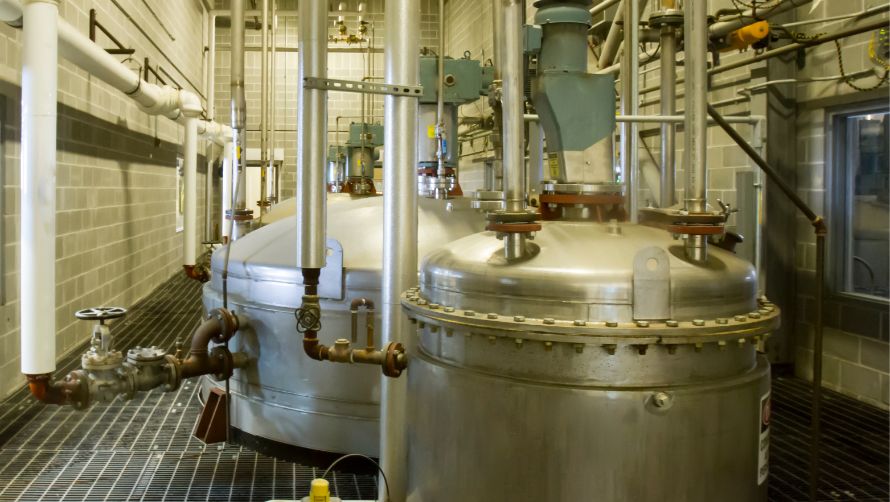
Fermentation and bioprocessing use living cells or microorganisms to produce pharmaceutical products like antibiotics, vaccines, and enzymes. This process involves cultivating microorganisms under controlled conditions such as temperature, pH, and oxygen levels inside bioreactors. Gases like carbon dioxide (CO₂) are generated as by-products, while nitrogen (N₂) and oxygen (O₂) are often used to maintain optimal growth environments. The process includes sterilization, inoculation, cultivation, harvesting, and purification.
Types of Gases Present
Ammonia (NH3) – Sometimes used as a nutrient or cleaning agent; toxic and corrosive.
Carbon Dioxide (CO2) – Produced naturally by microorganisms during fermentation; non-toxic but can displace oxygen in confined spaces.
Nitrogen (N2) – Used for purging and creating inert atmospheres; asphyxiation hazard if leaked in enclosed areas.
Oxygen (O2) – Supplied for aerobic fermentation; increases fire hazard if leaked.
Ethylene Oxide (ETO) – Used for sterilization; highly toxic and flammable.
Bioreactor Vents and Exhausts
Vents release excess CO₂ and other gases during fermentation; leaks can happen if vent filters or valves fail.
Fixed Point Detectors: Install CO₂ and O₂ detectors near bioreactor exhaust points and vent stacks.
Portable Detectors: Use portable detectors during maintenance, vent filter replacement, or sampling.
Gas Supply Lines (N2, O2)
Pipelines supplying nitrogen and oxygen can leak due to flange or valve failure, creating fire or asphyxiation risks.
Fixed Point Detectors: Place O₂ and N₂ sensors near gas supply racks and pipeline junctions.
Portable Detectors: Used during pipeline inspection, maintenance, or connection/disconnection activities.
Sterilization Chambers (Ethylene Oxide)
Ethylene oxide used in sterilizers is toxic and flammable; leaks may occur due to seal failure or venting issues.
Fixed Point Detectors: Install ETO gas detectors near sterilization units and exhaust vents.
Portable Detectors: Use portable ETO detectors during sterilizer maintenance or chamber openings.
Harvesting and Storage Tanks
Tanks used to collect and store biomass or intermediates can emit CO₂ or other gases during filling, agitation, or emptying
Fixed Point Detectors: Install CO₂ detectors near tank vents and manways.
Portable Detectors: Use portable detectors during tank cleaning, inspection, or maintenance.
Solvent Handling & Recovery
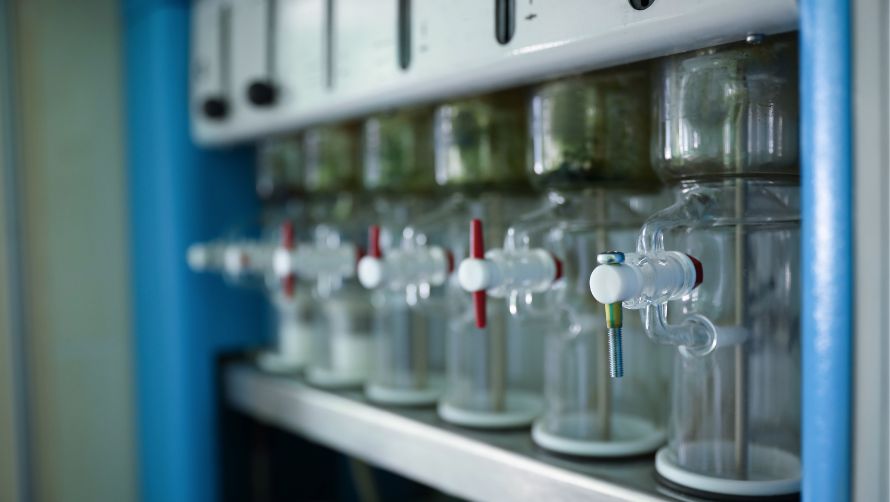
Solvent recovery is a critical process in pharmaceutical manufacturing where used solvents from chemical synthesis or formulation steps are purified and reused. This is both economically and environmentally beneficial. The process typically involves distillation, condensation, and filtration techniques to separate solvents from impurities. While it reduces waste, solvent recovery involves handling large volumes of flammable and toxic
Types of Gases Present
Volatile Organic Compounds (VOCs) – Solvents like methanol, ethanol, acetone, and toluene can leak during distillation, storage, or transfer; flammable and potentially toxic
Carbon Monoxide (CO) – Can be formed due to incomplete combustion in thermal recovery units; highly toxic and odorless.
Nitrogen (N2) – Used for purging and blanketing to prevent ignition; can displace oxygen and pose asphyxiation risk.
Distillation Column Vents
During solvent boiling and separation, pressure build-up may release vapors through vents or safety valves.
Fixed Point Detectors: Install VOC and CO detectors near vent outlets and overhead lines.
Portable Detectors: Use portable VOC detectors during maintenance, especially when working near column tops or sampling ports.
Solvent Storage Tanks
Recovered solvents are stored in bulk tanks, where leaks can occur at vents, manways, valves, and pipelines.
Fixed Point Detectors: Mount VOC detectors near vent stacks, pump areas, and around tank bases (especially for heavy vapors).
Portable Detectors: Operators should use portable VOC detectors during filling, emptying, and tank inspection.
Transfer Pumps and Loading Bays
Solvents are pumped from recovery units to storage or use areas, with risks of leaks at mechanical seals, hoses, and coupling points.
Fixed Point Detectors: Place VOC detectors around pump skids, transfer lines, and loading docks.
Portable Detectors: Maintenance and loading operators should use portable VOC detectors during drum or tanker handling.
Nitrogen Purging Lines
Nitrogen is used to create inert atmospheres in tanks and equipment; leaks may lead to oxygen displacement in enclosed areas.
Fixed Point Detectors: Install oxygen deficiency monitors (O₂ sensors) near confined spaces or purge lines.
Portable Detectors: Use portable O₂ monitors during entry into tanks or enclosed equipment after purging.
Drying & Granulation
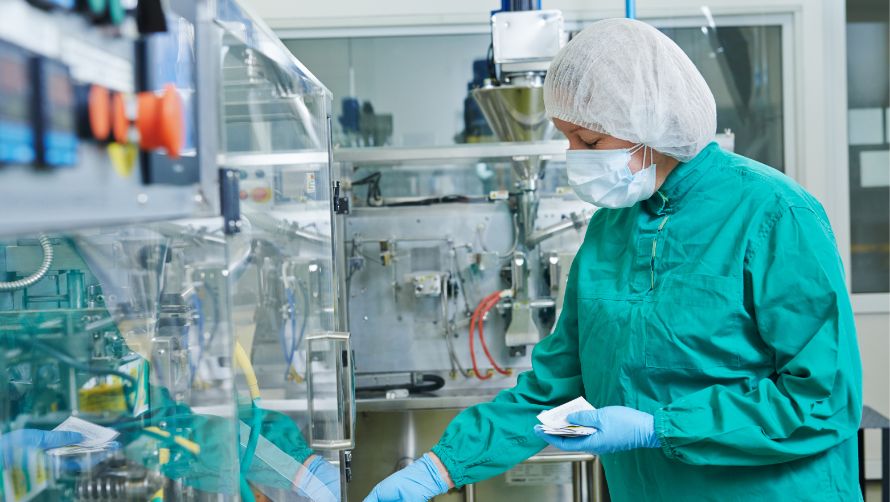
Drying and granulation are key steps in solid dosage pharmaceutical manufacturing. Granulation involves combining fine powders with a binder solution to form granules, which improves flowability and compression characteristics. These granules are then dried to remove moisture or solvent residues using fluid bed dryers, tray dryers, or vacuum dryers. Both wet granulation and drying stages involve handling of flammable solvents, heat, and airborne particles, increasing the risks of gas leaks and dust hazards.
Types of Gases Present
Volatile Organic Compounds (VOCs) – Organic solvents such as isopropanol, ethanol, and acetone used in binder solutions may vaporize during drying.
Nitrogen (N2) – Used in some granulation or drying systems for inerting; displaces oxygen and creates asphyxiation risks.
Hydrogen (H2) – Rarely used but may be involved in specific granulation processes under inert conditions; flammable.
Combustible Dust – Although not a gas, airborne powder during granulation and drying can lead to dust explosions in poorly ventilated areas.
Fluid Bed Dryer Exhausts
During granule drying, solvent-laden vapors exit through exhaust ducts; leaks can happen if duct joints, filters, or seals fail.
Fixed Point Detectors: Install VOC detectors near duct exits and filter housings of fluid bed dryers.
Portable Detectors: Use portable VOC detectors during filter cleaning, duct inspection, or dryer maintenance.
Granulation Mixer Ports and Charging Points
Binder solutions containing solvents are added through ports; open or faulty seals may release vapors into the room
Fixed Point Detectors: Mount VOC detectors near mixer ports and ingredient addition points.
Portable Detectors: Use portable VOC detectors during charging, especially if solvents are handled manually.
Solvent Storage and Transfer Units
Solvents used in wet granulation are stored in drums or tanks and transferred via pumps and lines; leakage may occur at seals or connections.
Fixed Point Detectors: Place VOC detectors around solvent tanks, transfer pumps, and hose connections.
Portable Detectors: Use portable detectors during drum changes, pump maintenance, or line flushing.
Nitrogen Purging Systems (If Used)
Nitrogen is sometimes used to purge air or maintain inert conditions during drying or granulation. Leaks can cause oxygen displacement.
Fixed Point Detectors: Install oxygen deficiency monitors in enclosed rooms or areas near purge line outlets.
Portable Detectors: Use portable O₂ monitors when entering enclosed granulation or drying rooms post nitrogen purging
Tablet Coating & Final Dosage Manufacturing
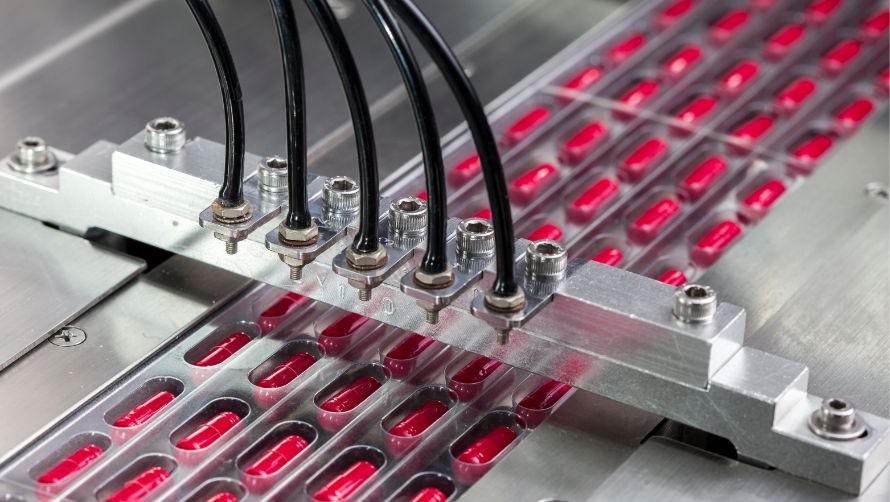
Tablet coating and final dosage manufacturing are critical finishing steps in pharmaceutical production. Coating is applied to tablets for taste masking, controlled release, or product stability. The coating process typically involves spraying polymer or sugar-based solutions (often solvent-based) in a rotating pan or fluidized bed under heated conditions. These operations involve the use of volatile solvents, compressed air, and temperature control systems. Final dosage processes include tableting, capsule filling, and packaging, often within cleanrooms. These stages pose risks of VOC emission, dust generation, and possible flammable vapor leaks.
Types of Gases Present
Volatile Organic Compounds (VOCs) – Solvents like ethanol, methanol, isopropanol, and acetone used in coatings can evaporate during spraying and drying.
Nitrogen (N2) – Occasionally used to prevent oxidation or control humidity in fluidized bed coaters.
Combustible Dust – While not a gas, dust from tablets and powders can become explosive when suspended in air.
Coating Pan Exhausts / Fluid Bed Dryer Exhausts
Solvent vapors are released during the drying phase and are carried out through exhaust ducts. Leaks may occur at duct connections or from insufficient filtration.
Fixed Point Detectors: Install VOC detectors at exhaust outlets and near coater housing.
Portable Detectors: Use portable VOC detectors during duct inspection, maintenance, or solvent changeover.
Solvent Storage & Transfer (For Coating Solutions)
Solvent-based coating solutions are stored and pumped into coating equipment. Leaks can occur at pumps, transfer lines, or connection points.
Fixed Point Detectors: Place VOC detectors near solvent tanks, pump areas, and mixing stations.
Portable Detectors: Use portable VOC detectors during solvent refilling, pump maintenance, or hose disconnection.
Tablet Compression & Powder Handling Zones
Fine pharmaceutical powders used in compression or encapsulation can generate dust clouds, posing inhalation and explosion hazards
Fixed Point Detectors: Install dust monitoring systems (optional), or combustible gas detectors if flammable powders or vapors are involved.
Portable Detectors: Use portable detectors when cleaning tablet presses, changing dies, or handling bulk powders.
Nitrogen Supply Lines (if used in coating)
Nitrogen is sometimes used in coating systems to minimize oxygen exposure and prevent solvent oxidation. Leaks may cause oxygen displacement.
Fixed Point Detectors: Install oxygen (O₂) deficiency monitors near nitrogen lines and within enclosed coating rooms.
Portable Detectors:Use portable O₂ monitors during nitrogen supply inspection or confined space entry.
Cleanroom Operations & HVAC Systems
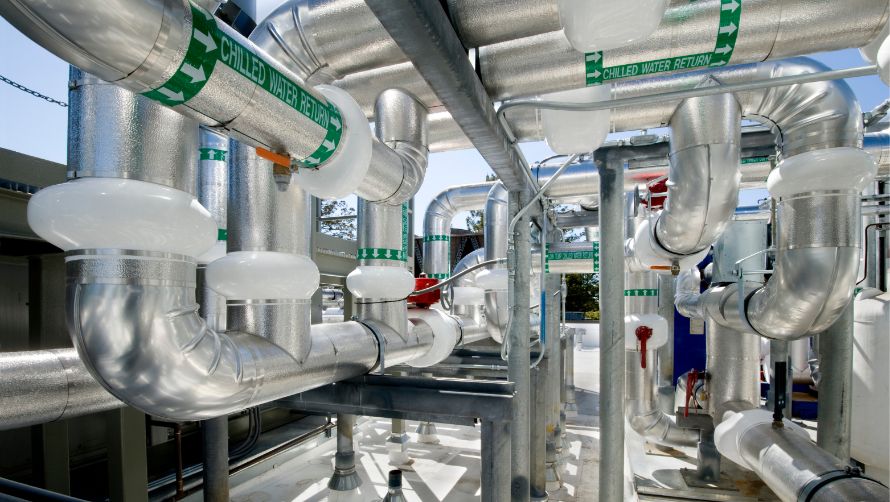
Cleanrooms are controlled environments used extensively in pharmaceutical manufacturing to minimize contamination risks during production. HVAC (Heating, Ventilation, and Air Conditioning) systems maintain clean air by controlling particulate levels, temperature, humidity, and pressure differentials. These systems often use compressed air, gases for air treatment, and chemical disinfectants. Improper maintenance or leaks in HVAC components can lead to gas leaks, contamination, or unsafe atmospheres.
Types of Gases Present
Compressed Air – Used in pneumatic systems; leaks can cause noise, pressure loss, and possible oxygen displacement.
Refrigerants (e.g., HFCs) – Used in HVAC cooling systems; leaks can be toxic or contribute to greenhouse gases.
Cleaning Agents & Disinfectants – Chemicals like formaldehyde or ammonia may be used in HVAC duct cleaning or surface sterilization, releasing vapors.
Carbon Dioxide (CO2) – May be used for humidity control or monitoring; leaks could cause asphyxiation in confined spaces.
Compressed Air Lines and Pneumatic Equipment
Compressed air is widely used for instrument control and cleaning; leaks occur at joints, valves, and hoses, causing energy loss and possible oxygen displacement.
Fixed Point Detectors: Install oxygen (O₂) deficiency monitors in enclosed areas with extensive compressed air use.
Portable Detectors: Use portable O₂ monitors during maintenance or inspections in confined HVAC spaces.
HVAC Refrigeration Units and Cooling Lines
Refrigerant leaks from cooling units or piping can release harmful gases that may be toxic or flammable depending on refrigerant type.
Fixed Point Detectors: Place refrigerant gas detectors near compressors, condensers, and piping.
Portable Detectors: Use portable detectors during system servicing or leak detection.
Cleaning and Disinfection Chemical Storage & Application Areas
Chemicals used for cleaning HVAC ducts and components may emit hazardous vapors during handling or application.
Fixed Point Detectors: Install ammonia or formaldehyde detectors near chemical storage and application zones.
Portable Detectors: Use portable detectors when refilling or applying disinfectants.
HVAC Ducts and Air Handling Units (AHUs)
Leaks or poor seals in HVAC ducts can cause unintended airflow, contamination, or accumulation of gases like CO₂ or VOCs.
Fixed Point Detectors: Install VOC or CO₂ detectors in critical air handling units or return air ducts.
Portable Detectors: Use portable gas detectors during duct inspection, cleaning, or repair.
Sterilization & Decontamination

Sterilization and decontamination are vital processes in pharmaceutical manufacturing to ensure that equipment, containers, and products are free from harmful microorganisms. Common sterilization methods include steam sterilization (autoclaving), dry heat sterilization, chemical sterilants (such as ethylene oxide or hydrogen peroxide vapor), and radiation. Decontamination processes may use chemical disinfectants or gases to clean surfaces and equipment. These processes often involve handling toxic or flammable gases and vapors, requiring strict monitoring to prevent leaks and ensure safety.
Types of Gases Present
Ethylene Oxide (ETO) – A commonly used gaseous sterilant; flammable, toxic, and carcinogenic.
Hydrogen Peroxide Vapor (H2O2) – Used for low-temperature sterilization; corrosive and irritating.
Steam (Water Vapor) – Used in autoclaves; generally safe but can cause burns and pressure hazards.
Formaldehyde(CH2O)– Occasionally used as a sterilant; toxic and irritating vapors.
Ammonia (NH3) – Used in some decontamination processes; corrosive and toxic
Sterilizer Chamber and Door Seals
Sterilant gases or steam are contained within sterilizer chambers; leaks may occur at door gaskets, seals, or pressure relief valves during sterilization or venting.
Fixed Point Detectors: Install ETO, H₂O₂, or ammonia detectors near sterilizer doors and vent outlets.
Portable Detectors: Operators should carry portable gas detectors when opening sterilizers, performing maintenance, or during gas injection.
Sterilant Gas Supply Lines and Storage Tanks
Gas cylinders or bulk tanks supplying sterilants (ETO, H₂O₂) can leak at valves, regulators, or connection points.
Fixed Point Detectors: Place gas-specific detectors (ETO, H₂O₂) near storage areas and along supply pipelines.
Portable Detectors: Use portable detectors during cylinder changes, pressure checks, or line maintenance.
Exhaust and Ventilation Systems
Sterilization exhaust systems vent residual gases after cycle completion; leaks may occur at duct joints, fans, or scrubbers.
Fixed Point Detectors: Install detectors near exhaust outlets and ventilation inlets to monitor released gases.
Portable Detectors: Use portable detectors during ventilation system inspection or scrubber maintenance.
Decontamination Spray or Gas Application Points
Gas or chemical sprays used for decontamination can generate vapors that may escape during application or equipment cleaning.
Fixed Point Detectors: Place detectors near spray nozzles, application chambers, or containment hoods.
Portable Detectors: Use portable detectors during manual cleaning or when working in confined spaces.
Inerting & Gas Blanketing
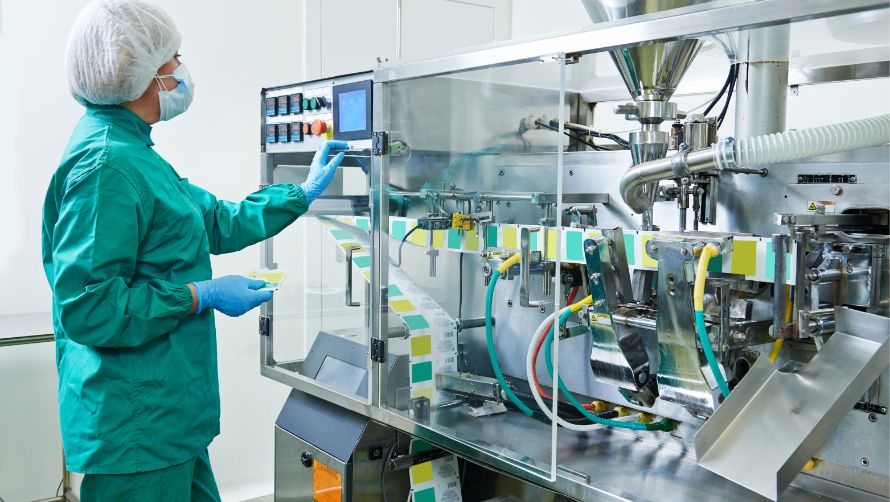
Inerting and gas blanketing are safety techniques used to prevent oxidation, combustion, or contamination in pharmaceutical manufacturing and storage. This involves replacing the air (oxygen) inside vessels, reactors, or storage tanks with inert gases like nitrogen or carbon dioxide. Gas blanketing is also used to maintain product stability by minimizing exposure to moisture and oxygen. Improper handling or leaks of inert gases can lead to oxygen-deficient atmospheres, posing asphyxiation risks.
Types of Gases Present
Carbon Dioxide (CO2) – Produced naturally by microorganisms during fermentation; non-toxic but can displace oxygen in confined spaces.
Nitrogen (N2) – Used for purging and creating inert atmospheres; asphyxiation hazard if leaked in enclosed areas.
Storage Tanks and Reactors
Gas blanketing lines supply inert gases to tanks or reactors; leaks can occur at valves, flanges, or seals, risking oxygen displacement.
Fixed Point Detectors: Install oxygen deficiency monitors near tanks, vessels, and confined spaces.
Portable Detectors: Use portable oxygen monitors during maintenance or entry into blanketed vessels.
Gas Supply Lines and Regulators
Pipelines, pressure regulators, and gas cylinders supplying inert gases may leak at connections or valve seats.
Fixed Point Detectors: Place gas leak detectors near supply stations and pipeline routes.
Portable Detectors: Use portable gas detectors during cylinder changes and routine inspections
Cryogenic Storage (Cold Chain for Biologics)

Cryogenic storage is used to preserve biologics, vaccines, and other temperature-sensitive pharmaceutical products at ultra-low temperatures, often using liquid nitrogen or dry ice. This cold chain storage requires specialized tanks and handling systems. Leaks of cryogenic gases can cause frostbite hazards and oxygen displacement, creating asphyxiation risks in confined spaces.
Types of Gases Present
Carbon Dioxide (CO2) – Used as dry ice or in gas form for cooling; risks include asphyxiation and high-pressure release.
Nitrogen (N2) –Used as a cryogenic refrigerant; leaks can cause oxygen deficiency.
Cryogenic Storage Tanks and Transfer Lines
Storage tanks and transfer lines can leak during filling or due to seal failure, releasing cold gases and displacing oxygen.
Fixed Point Detectors: Install oxygen deficiency and temperature monitors near storage and transfer points.
Portable Detectors: Use portable oxygen and gas detectors during tank filling and maintenance.
Storage Room or Cold Room Atmosphere
Enclosed storage rooms can accumulate inert gases from leaks, leading to oxygen depletion.
Fixed Point Detectors: Install oxygen deficiency monitors and alarms in storage rooms.
Portable Detectors: Use portable oxygen monitors for periodic safety checks or confined space entry.
Effluent Treatment & Waste Gas Scrubbing
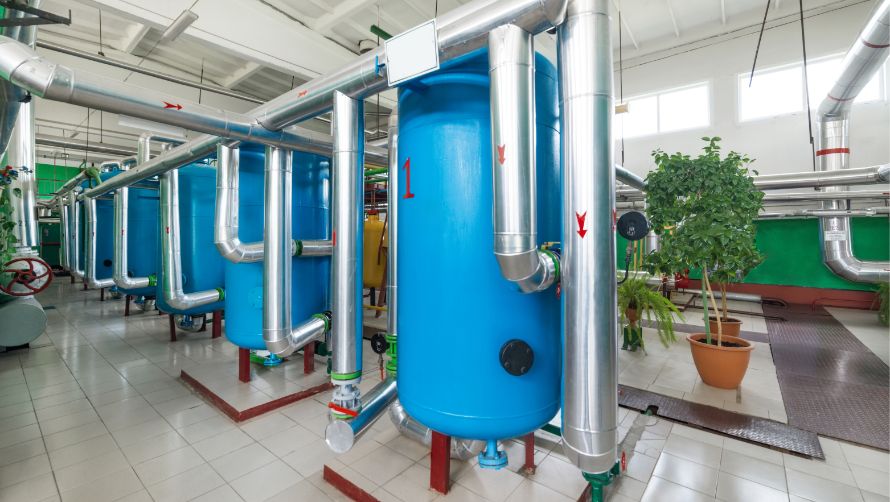
Effluent treatment involves treating liquid waste from pharmaceutical processes before discharge, removing harmful chemicals and microbes. Waste gas scrubbing systems treat contaminated exhaust gases by neutralizing or capturing hazardous compounds using scrubbers or filters. These systems often handle corrosive or toxic gases, requiring robust leak detection to protect workers and the environment.
Types of Gases Present
Hydrogen Sulfide (H2S) – Toxic gas sometimes present in waste streams.
Sulfur Dioxide (SO2)– From acidic waste gas treatment.
Ammonia (NH3)– Used in neutralization processes.
Volatile Organic Compounds (VOCs) – From waste solvent emissions.
Scrubber Inlet and Outlet Lines
Corrosive and toxic gases flow through scrubber pipes, valves, and pumps where leaks can occur.
Fixed Point Detectors: Install detectors for H₂S, SO₂, NH₃, and VOCs near inlet/outlet and around scrubber units.
Portable Detectors: Use portable gas detectors during maintenance and system inspection.
Waste Storage and Treatment Tanks
Tanks holding waste liquids may emit gases through vents or leaks in seals and pipelines.
Fixed Point Detectors: Place detectors around tank vents and adjacent process areas.
Portable Detectors: Use portable detectors during tank filling, cleaning, or inspection.
